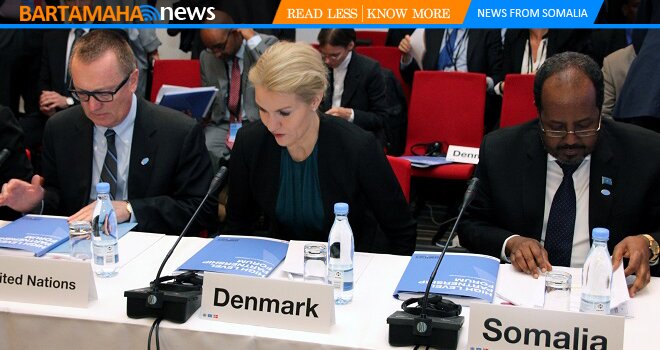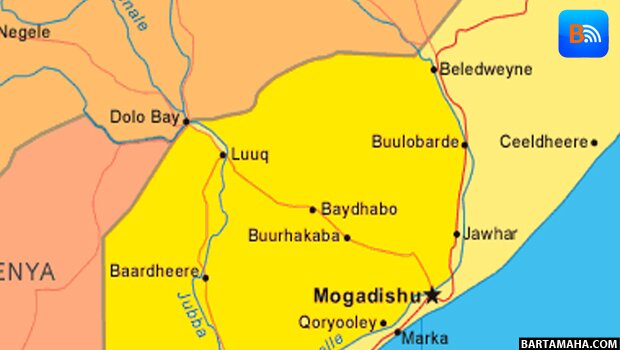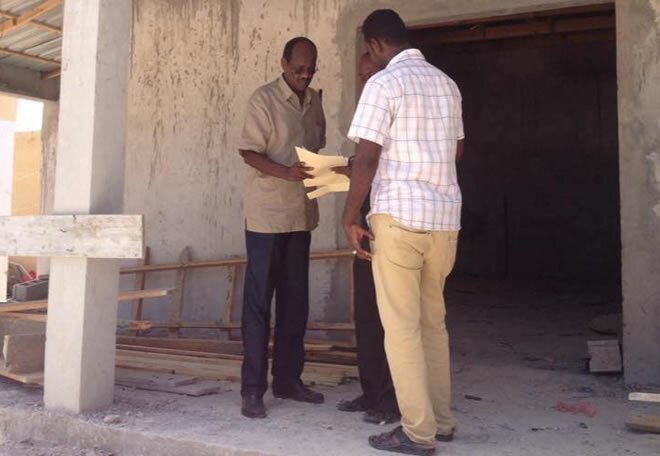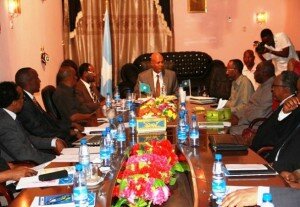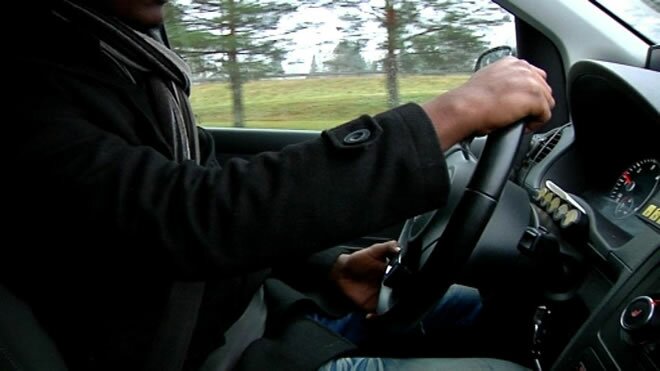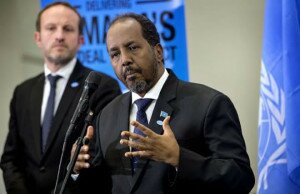Somalia: Islamic Terrorists Down But Still Nasty
For over a month soldiers and peacekeepers have been advancing south and driving al Shabaab men out of over a dozen towns containing more than 100,000 people. Counting those living in nearby villages and small settlements that comes to nearly a quarter million people liberated. The Islamic terrorists admit they have ordered their men to not stand and fight but to withdraw and organize terror attacks on security forces and pro-government locals. There are still several dozen towns and villages with Islamic terrorists still in them and basically living off (and terrorizing) the locals. This includes a 200 kilometer stretch of the southern coast, including the port town of Barawe.
Chasing the Islamic terrorists out of these towns is the easy part, what is difficult is setting up security in “liberated” areas. Al Shabaab has made public its plans to attack these new policing forces and regain control. In some cases the departing Islamic terrorists ordered residents to flee with them. Or, as the terrorists sometime put it, “with us or die.” There were no massacres against those who did not flee and few civilians left as the peacekeepers arrived. Al Shabaab leaders have been urging their men to develop better relations with civilians, in line with current al Qaeda doctrine.
Most al Shabaab men have taken these instructions to heart and there have been no mass killings of civilians recently. But the people in the former al Shabaab controlled areas are terrified that al Shabaab will do what they said they would and return. There is going to be a lot more fighting in the south, most of it terror attacks and small battles with groups of al Shabaab who get cornered and fight to the death (as many are wont to do.)
Somalis are also angry with how the Islamic terrorists take what they want (as “taxes”) and are now confiscating any telephones they find that have cameras. Somalis report that the Islamic terrorists are very frightened of the approaching peacekeepers and desperate to keep the local Somalis so terrified that no one will cooperate with the peacekeepers to find where the al Shabaab men are hiding.
April 1, 2014: In Kenya (Mombasa) a radical Islamic cleric was shot dead in a drive-by shooting. He is the third Kenyan Islamic radical cleric to die like this in the past two years. This has led to unrest among Kenyan Moslems who accuse the government of assassinating Islamic radical clerics and persecuting Moslems in general. Many Moslems have a sense of entitlement and believe that the non-Moslem world is at war with them. These attitudes are a primary cause of Islamic terrorism and are difficult to deal with. The dead cleric has long been accused to preaching in support of Islamic terrorism and recruiting for al Shabaab.
March 31, 2014: In Kenya (Nairobi) three bombs went off in a market in a neighborhood full of Somalis. There were six dead and twenty wounded. Police immediately began searching buildings in the area and seeking al Shabaab sympathizers. By the next day police had arrested over 650 local Somalis for questioning.
March 28, 2014: In the southern port town of Barawe al Shabaab accused three local men of spying for the government and then killed them. The men may indeed have been government informants but the Islamic terrorists will often accuse anyone in the least degree suspicious and kill them just to frighten others away from becoming informants.
March 25, 2014: Kenya ordered all Somali refugees living outside refugee camps to move to a refugee camp. The UN promptly criticized this measure but the government is under tremendous public pressure to reduce the Somali terrorist threat. Since many Somali refugees have been caught supporting or carrying out terrorist activities the UN protests are not popular at all in Kenya and the refugees will be pressured to go to the camps.
There are about 525,000 Somali refugees in two Kenyan camps. The UN runs the camps but has no control over some 50,000 Somali refugees living mostly in the Somali neighborhoods of Nairobi and Mombasa. About 76 percent of the Moslems (four million people) in Kenya are ethnic Somalis who are citizens. Kenya is largely Christian with a Moslem minority (12 percent of the population) that has been harboring Islamic terrorists. Kenya also hosts nearly 300,000 other refugees from Ethiopia, Sudan, Burundi and Congo. Many Kenyans feel that the rest of the world does not appreciate what a heavy burden this places on Kenya.
March 23, 2014: South of the central Somalia town of Baidoa al Shabaab gunmen stopped a vehicle carrying eight clan elders from a government conference. When the Islamic terrorists discovered the loyalties of the elders they killed them.
In Kenya (outside Mombasa) masked gunmen charged into a church and opened fire on the worshippers, leaving six dead and many wounded. This gunmen then left and moved wards another church nearby but before they could get into that church police showed up and the gunmen fled. The attackers were believed to be Islamic terrorists, most likely Somalis because they were yelling in a language the victims could not understand.
March 18, 2014: In the north (Buloburde) al Shabaab used a roadside bomb against soldiers and peacekeepers and killed eleven of them. In the south a suicide car bomber and some Islamic terrorist gunmen attacked a hotel housing peacekeepers and killed eight people. Four of the attackers were also killed. Both these attacks followed similar violence a few days earlier.
March 17, 2014: Outside of Mogadishu Islamic terrorists attacked peacekeepers with a suicide car bomb, killing four people.
March 15, 2014: In Mogadishu a suicide car bomber set off his explosives prematurely killing only himself.
March 14, 2014: Kenya deported three foreigners (from Belgium, France and Algeria) who had been arrested in 2013 as they attempted to get to Somalia to join al Shabaab. The U.S. announced rewards of up to $3 million each for information on three al Shabaab leaders.
STRATEGY PAGE
Comments
comments
 Calendar
Calendar














